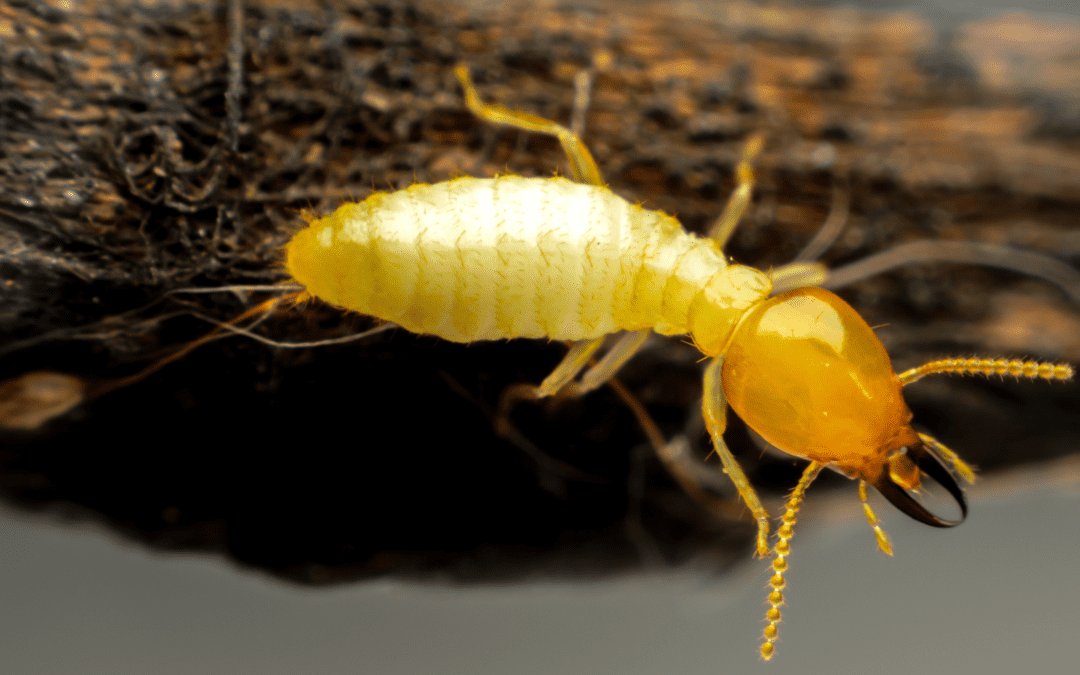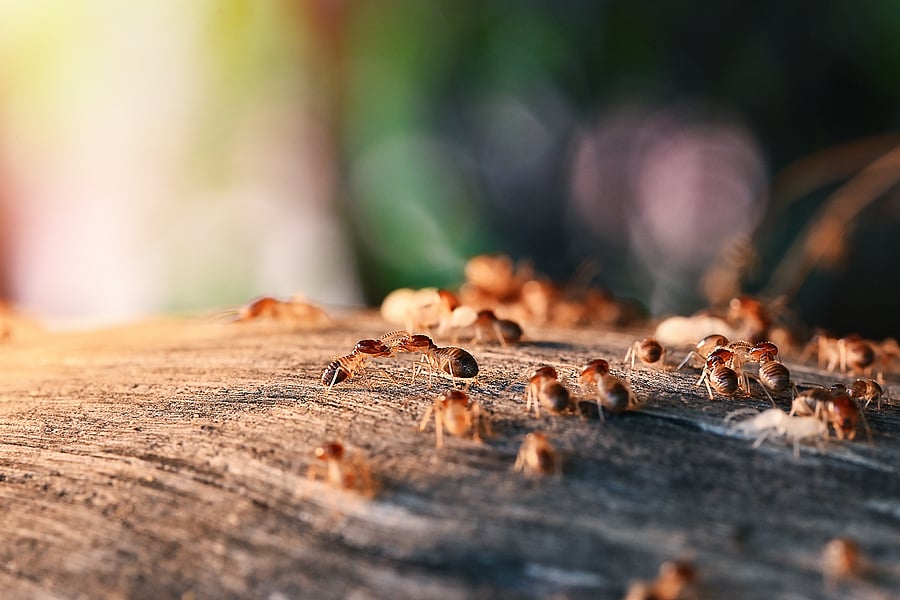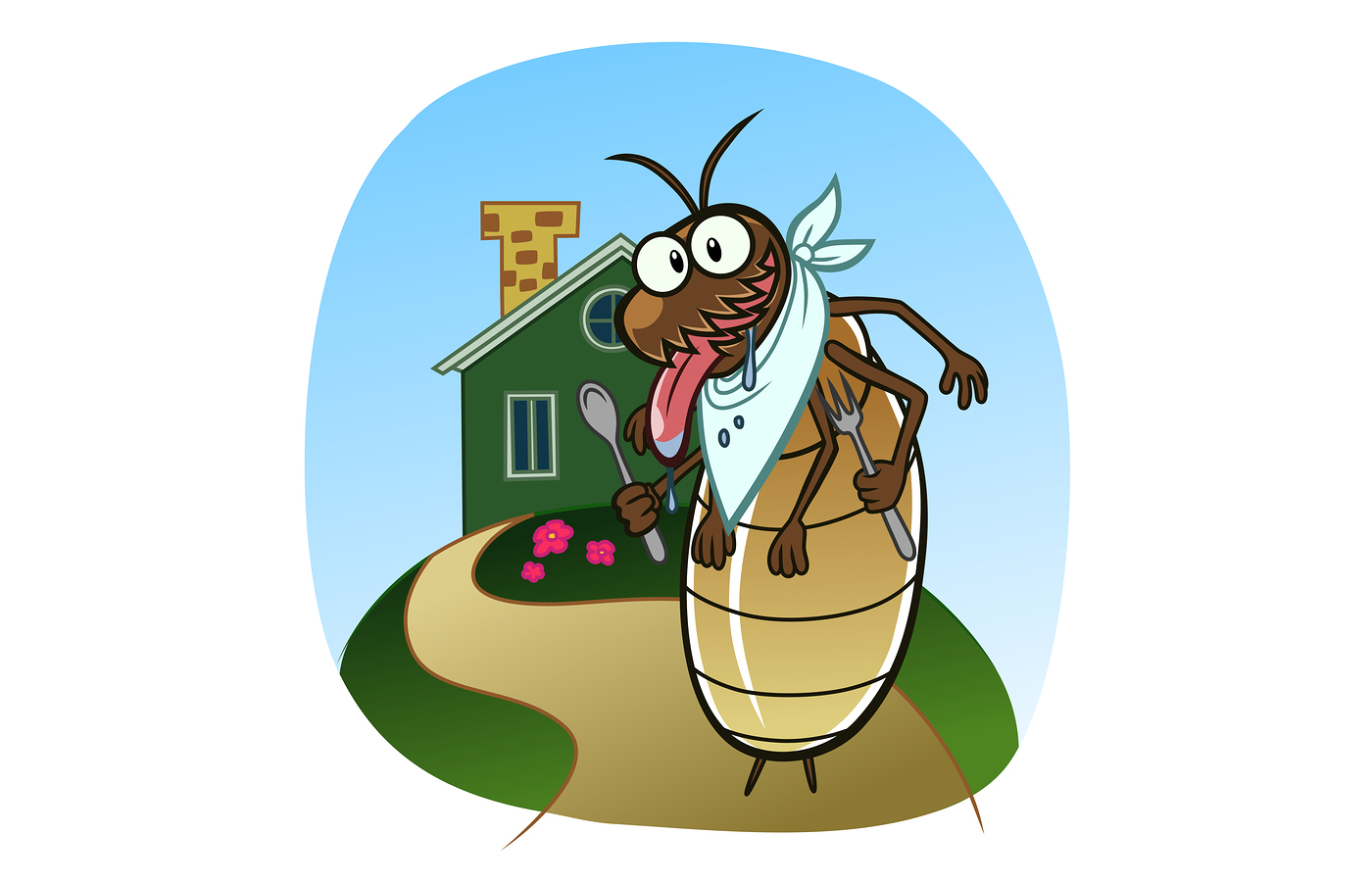
Sep 20, 2022 | Termite Control
It’s no surprise that termites are still active in the fall. The only factor that changes termite activity in the fall season is their tendency to burrow deeper into the ground. However, if these pests burrow their way into your home, they won’t need to dig deeper to find warmth and instead will infest.
Continuing termite control into the colder months will help to protect your home up until spring begins again. Be sure to keep up with termite control to lessen the chance of termites swarming in the spring and summer months.
Regardless of the season, there are common signs of termite infestations to look for in your home, including:
- Swarms: One of the earliest signs of termites is termite swarms. Termites emerge in early spring or summer to reproduce and establish new colonies. Seeing swarmers indicates a colony is nearby, so take precautions.
- Noises: Beyond visual cues of termites being nearby, you can sometimes hear them! If a colony is larger and established, you may begin hearing a faint clicking or knocking sound behind your walls or in other void areas of your home.
- Mud Tubes: If you begin seeing mud tubes around your home, it can be a big indication of a termite colony. These tubes are built to help protect termites from damage and predators and allow them to accumulate moisture, which termites need to survive.
- Wood Damage: Window, floor, and door damage may also indicate a termite infestation. Sagging floors can indicate a well-established colony. When doors and windows warp or don’t open and close smoothly, it can indicate the presence of termites, as well.
There are a few steps for termite protection you can take in and around your home. Make sure all water and gas lines are sealed adequately. Fix any leaky faucets or appliances and get rid of any standing water. Try to eliminate any cellulose material, as this is a termite’s primary food source.
If you suspect you have a termite problem or want to stay proactive against them, reach out to your local pest control company to receive a free termite inspection and discover the best plan of action perfect for you and your home!

Jun 4, 2021 | Termite Control
Spring and early summer mark the start of termite swarming season. Swarming termites, also known as alates, are classified as nuisance pests because although they can be bothersome to have around, they cannot bite, sting, or even chew wood. They do, however, signify the presence of an established termite colony nearby which can be problematic for you and your home.
Termites are silent destroyers, often causing significant damage and destruction to your home for long periods of time while going undetected. Learning the signs of termites, including the presence of swarms, is a critical first step in termite prevention.
When dealing with termite swarms, several questions are posed: When is swarming season? Where should I look for swarms? Can these swarms cause damage? Why are they swarming? How can I prevent them?
When Is Swarming Season?
This question depends on what type of termite you are dealing with. Subterranean termites begin their swarming season in the spring, usually during daylight hours. Drywood termites, on the other hand, don’t swarm until late summer and early fall. Dampwood termites tend to swarm during the summer months. The weather also plays a factor into when termites will swarm. Each species has its own set of conditions that are ideal for swarming but most of them will start the day after a rainstorm when the weather is still overcast and there is little to no wind.
Where Should I Look For Swarms?
While termite swarms can be found both indoors and outdoors, they cannot survive indoors because of the lack of soil in which to colonize. Swarming termites can be found anywhere termites colonize. If they do make their way indoors, they can often be found near windows and light fixtures as they are attracted to the light.
Can These Swarms Cause Damage?
Termite swarms themselves usually do not cause damage. Swarming termites cannot bite, sting, or chew. As termites get ready to swarm, they make a tube which they use to launch. When conditions are ideal, they use the tube to launch themselves. After a brief flight of only a few seconds, the termites land and break their wings away from their bodies and pair with a mate. Those pairs that survive then create a chamber underground that they use to breed and the new colony is formed. Swarm launches are usually spread out over a few days with a large release on the first day and smaller launches on subsequent days. Termite swarms can indicate the presence of an existing colony nearby so while the swarmers themselves may not cause damage, the nearby colony can.
Why Are They Swarming?
The primary purpose of termite swarms is reproduction and expansion of the colony. When the original termite colony reaches capacity and needs to expand then the swarming process begins, usually occurring once per year. The number of termites in each swarm varies depending on which type of termite species is swarming and the size of the colony.
How Can I Prevent Them?
In order to prevent termite swarms, one must prevent termite colonies from establishing nearby. Prevent termites by:
- Getting rid of water sources by eliminating or reducing standing water around your home.
- Repairing any leaky faucets, pipes, and air conditioners.
- Diverting water away from your house with properly functioning spouts, splash blocks, and gutters that are clear of debris.
- Repairing and replacing damaged roof shingles, fascia and soffits on your house.
- Replacing weatherstripping on doors and windows.
- Routinely inspecting foundations for loose mortar, uneven or bubbling paint, wood that sounds hollow when you tap it, and for the presence of mud tubes which termites use to reach food.
- Regularly inspecting wood in and around your home for noticeable changes, making sure to check windows, doors, and skirting.
- Making sure there is at least an 18″ gap between the soil and the wood portions of your home.
- When storing items in the attic or basement, using plastic storage containers and metal shelving instead of cardboard or wood.
- During swarming season, keeping doors and windows shut as much as possible. Keep outdoor lights turned off at night also, as they will attract swarming termites.
- Keeping firewood stored at least 20 feet away from your home and elevated off the ground.
- Keeping plants a few feet away from your home.
- Making sure there is at least a 4″ barrier between your mulch and the side of your home. You can also use mulch made of rubber, plastic, or gravel.
- Removing any tree stumps from your property.
- Scheduling an annual termite inspection of your home and property to help detect termite problems early before they can cause significant damage.
Because a termite swarm indicates a nearby colony, homeowners should take precaution when one is spotted nearby. If you suspect you have a termite infestation, contact a professional pest control company who can inspect your property and set up a termite control plan.
You May Also Be Interested In:
Preventing Ticks & Fleas
7 Snakes You May Encounter This Summer
Are Termites Active Right Now?
Turning A Yellow Lawn Green
Is That Spider Poisonous?

May 4, 2017 | Termite Control
Most of us know that termites‘ preferred food source is often the wood our homes are constructed of and that they cause billions of dollars in structural damage each year. But aside from being a costly nuisance, termites are actually interesting and beneficial insects – here’s why:
- Termites help keep our planet clean by eating/decomposing old, moldy, decaying, wet trees, wood, debris and other plant material. This process is vital to our eco-system and produces new soil which then grows new life – trees, plants, and provides food sources and homes to other animals and insects.
- Termites have been around for over 200 million years, making them one of the oldest insects, and live on almost every continent.
- Termites provide an excellent food source for bugs, lizards, birds, anteaters, other small animals, and even people in some parts of the world.
- Termites live in colonies that can consist of millions of termites. They’re organized, social insects that have very specific roles within their colonies and use pheromones to communicate with one another. Queens & kings reproduce and care for nymphs (babies), workers provide food, and soldiers protect the colony.
- Termites eat poop. Yes, it sounds gross but it’s actually totally necessary to prepare their digestive systems for eating wood and other plant material – a process called trophallaxis.
- Swarming termites – sometimes mistaken for flying ants – don’t actually cause structural damage. These winged termites (reproductive kings and queens) fly from the colony in search of mates to reproduce with.
- While termites may look similar to ants, they’re actually more closely related to cockroach species.
- Termites build mounds or nests where the colony resides – usually made of digested wood, soil, mud, and feces. Sometimes these nests are extremely large and intricate, with the one of the largest found being 42 feet tall!
- A female queen termite can live for up to 25 years and have millions of offspring in her lifetime!
- In some cultures, termites in a home represent a bad omen (death in the near future for the homeowner!). In this case, the only way it’s believed to escape death is to eliminate the termite colony or abandoning the infested home.

May 4, 2017 | Termite Control
Most of us know that termites‘ preferred food source is often the wood our homes are constructed of and that they cause billions of dollars in structural damage each year. But aside from being a costly nuisance, termites are actually interesting and beneficial insects – here’s why:
- Termites help keep our planet clean by eating/decomposing old, moldy, decaying, wet trees, wood, debris and other plant material. This process is vital to our eco-system and produces new soil which then grows new life – trees, plants, and provides food sources and homes to other animals and insects.
- Termites have been around for over 200 million years, making them one of the oldest insects, and live on almost every continent.
- Termites provide an excellent food source for bugs, lizards, birds, anteaters, other small animals, and even people in some parts of the world.
- Termites live in colonies that can consist of millions of termites. They’re organized, social insects that have very specific roles within their colonies and use pheromones to communicate with one another. Queens & kings reproduce and care for nymphs (babies), workers provide food, and soldiers protect the colony.
- Termites eat poop. Yes, it sounds gross but it’s actually totally necessary to prepare their digestive systems for eating wood and other plant material – a process called trophallaxis.
- Swarming termites – sometimes mistaken for flying ants – don’t actually cause structural damage. These winged termites (reproductive kings and queens) fly from the colony in search of mates to reproduce with.
- While termites may look similar to ants, they’re actually more closely related to cockroach species.
- Termites build mounds or nests where the colony resides – usually made of digested wood, soil, mud, and feces. Sometimes these nests are extremely large and intricate, with the one of the largest found being 42 feet tall!
- A female queen termite can live for up to 25 years and have millions of offspring in her lifetime!
- In some cultures, termites in a home represent a bad omen (death in the near future for the homeowner!). In this case, the only way it’s believed to escape death is to eliminate the termite colony or abandoning the infested home.



